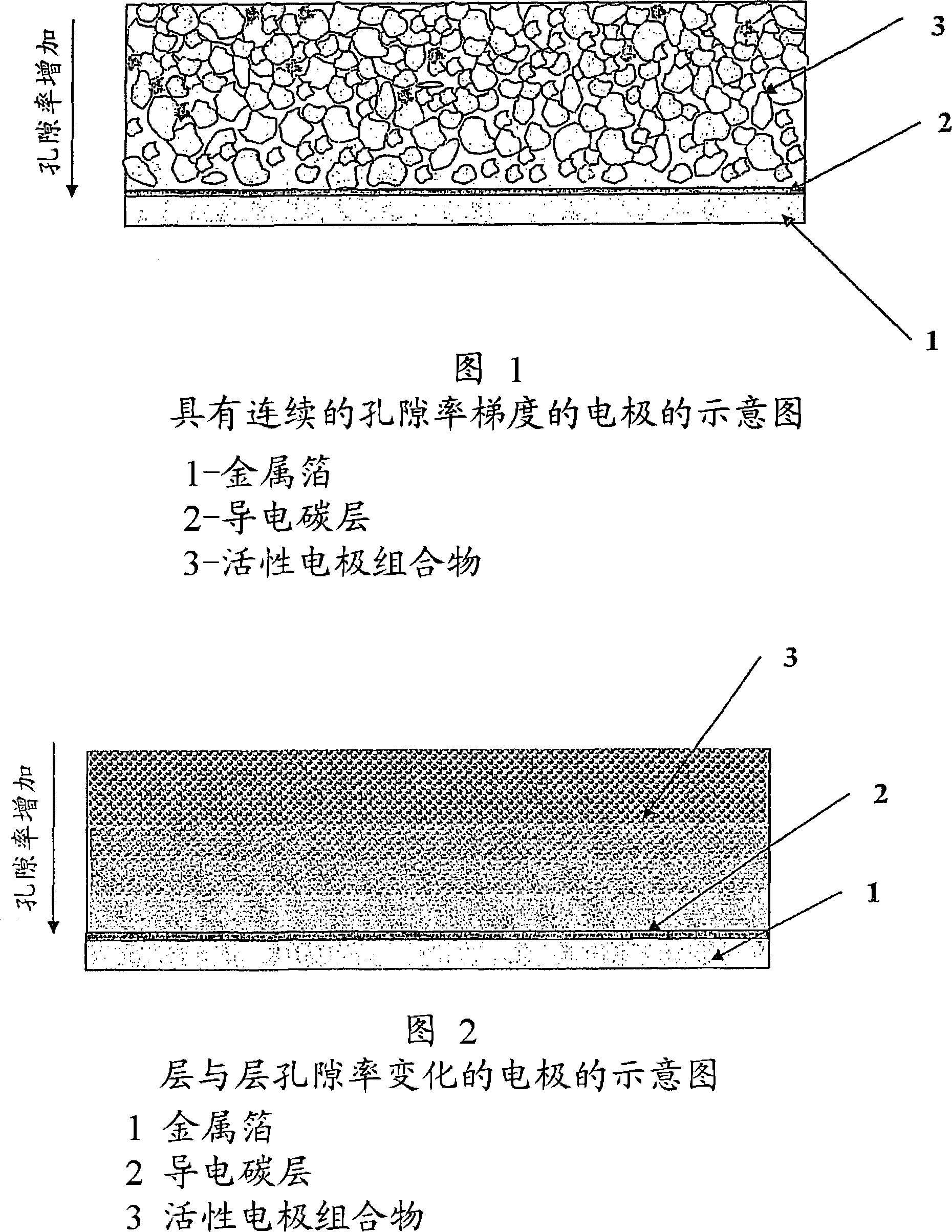Improvements relating to electrode structures in batteries
A technology of electrode structure and electrode composition, applied in battery electrodes, non-aqueous electrolyte battery electrodes, electrode manufacturing, etc., can solve the problems of reduced porosity, increased energy density of chemical sources, and reduced ion conductivity of electrodes
- Summary
- Abstract
- Description
- Claims
- Application Information
AI Technical Summary
Problems solved by technology
Method used
Image
Examples
Embodiment 1
[0077] A cathode active layer having a composition consisting of 70% by weight elemental sulfur (available from Fisher Scientific, Loughborough, UK), 10% by weight conductive carbon black (Ketjenblack(R) EC) was prepared by the following method. -600JD, available from Akzo Nobel Polymer Chemicals BV, The Netherlands) and 20% by weight polyethylene oxide (PEO, 4,000,000 molecular weight, available from Sigma-Aldrich Ltd, Greenham, UK). The mixture of dry ingredients was milled for 10-15 minutes in a Microtron(R) MB550 homogenizing system. Acetonitrile was added as a solvent to the obtained mixture. The finally obtained liquid suspension or slurry was mixed for 15-20 hours using a laboratory mixer DLH. The solid matter in the slurry accounts for 10%-15% by weight. Using an Elcometer(R) SPRL automatic film applicator with a squeegee, the resulting mixture was coated onto an aluminum foil coated with 18 micron thick conductive carbon (available from South Harbour, Massachusetts,...
Embodiment 2
[0080] The slurry from Example 1 was applied by an Elcometer(R) SPRL automatic film applicator with a squeegee onto an aluminum foil coated with 18 micron thick conductive carbon (available from Massachusetts, USA) as current collector and substrate. InteliCoat(R) in South Hadley). The gap of the squeegee is different from that of the squeegee used in Example 1. The above coating was dried at ambient conditions for 20 hours and then dried under vacuum at 50° C. for 5 hours.
[0081] The finally obtained dry cathode active layer has a thickness of about 21 microns, loaded with 1.35 mg / cm 2 cathode composition. The bulk density of the electroactive coating is about 636 mg / cm 3 . The porosity of the cathode active layer was 65%.
Embodiment 3
[0083] A second layer of slurry was applied on top of the solid composite cathode from Example 1 by an Elcometer(R) SPRL automatic film applicator. The new coating was dried at ambient conditions for 20 hours and then dried under vacuum at 50°C for an additional 5 hours.
[0084] The finally obtained dry cathode active layer has a total thickness of about 25 microns, loaded with 2.23 mg / cm 2 cathode composition. The bulk density of the two-layer electroactive coating is about 890 mg / cm 3 . The porosity of the cathode active layer was 55%.
PUM
| Property | Measurement | Unit |
|---|---|---|
| thickness | aaaaa | aaaaa |
| density | aaaaa | aaaaa |
| density | aaaaa | aaaaa |
Abstract
Description
Claims
Application Information
 Login to View More
Login to View More - R&D
- Intellectual Property
- Life Sciences
- Materials
- Tech Scout
- Unparalleled Data Quality
- Higher Quality Content
- 60% Fewer Hallucinations
Browse by: Latest US Patents, China's latest patents, Technical Efficacy Thesaurus, Application Domain, Technology Topic, Popular Technical Reports.
© 2025 PatSnap. All rights reserved.Legal|Privacy policy|Modern Slavery Act Transparency Statement|Sitemap|About US| Contact US: help@patsnap.com

